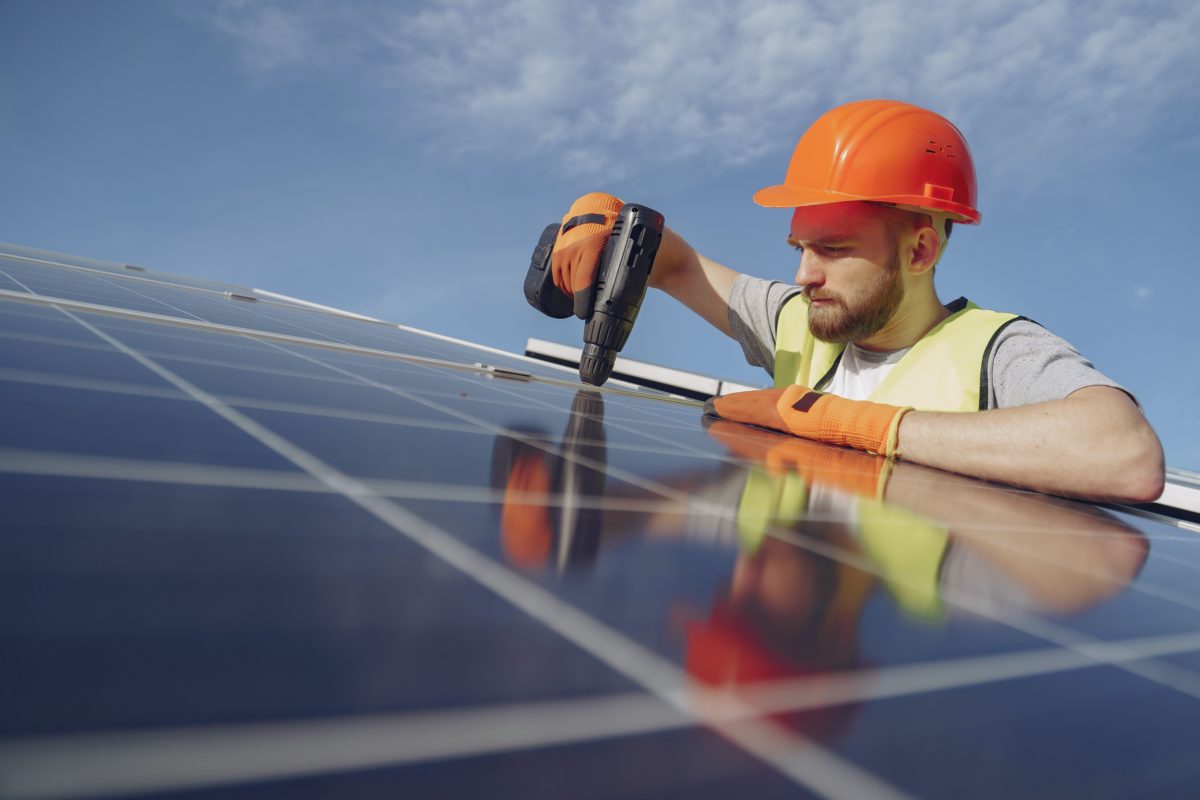A study by Cornell University, Exploring the Conditions of the New York Solar Workforce, surveyed more than 260 solar installation and maintenance workers in the state, finding significant disparity in pay and benefits, as well as safety concerns.
In 2023, the national median annual wage of construction trade workers was $52,000, while the national median annual wage for solar photovoltaic installers was $48,230, and $23.46 per hour, according to the Bureau of Labor Statistics.
The New York solar workforce continues to grow, rising from an estimated 11,500 in 2022 to more than 14,500 in 2023.
Most of the 260 survey respondents CJI interviewed were nonunion, full-time workers directly employed by solar companies between December 2021 and September 2023.
The report found significant differences in compensation and benefits. Nearly 60% of workers surveyed reported having no benefits. Installation workers for utility-scale projects were the least likely to be paid an annual salary, and less likely to report longer employment tenures with their main employer.
Cornell’s Climate Justice Institute (CJI) said the actual count can be difficult to trace, as many people work for multiple employers. More than 40% of respondents had at least two employers, and nearly a quarter worked for three or four. About two-thirds relocated to New York for solar jobs, mostly with large national companies, and more than 70 said they lived in one of 23 other states, including 53 people moving from as far as California.
CJI found that Black and Hispanic workers were more likely than white workers to report not receiving benefits from their employment. Surveyed white workers were paid an annual salary nearly twice the median rate of Black and Hispanic workers. Black workers were more likely to be paid in cash than white workers and were also more likely to experience wage theft from their employer, but less likely to formally report wage theft, according to the report.
About 34% of survey respondents said they are paid on a per-panel-installed basis, which CJI said is a safety and quality concern.
“Previous literature has identified potential links between piece rate pay— which would include pay by panel— and adverse outcomes for workers,” said the Cornell report. ”The legality of piece rate pay, minimum wages, and transience across the solar sector must be analyzed further.”
Most respondents indicated they held some level of Occupational Safety and Health Administration (OSHA) certification. About 58% of the sample had an OSHA30 certification, 48% of the sample had an OSHA 10 certification, 39% of the sample had an OSHA Flagger certification, and 8% of sample had an OSHA scaffold certification. Only 2% of the sample indicated that they held no OSHA certifications.
Another safety concern for solar workers on New York job sites is stimulant use. More than 50% of workers surveyed reported that they agreed stimulant use on their solar worksites in New York was a problem.
The report warned that “pay-per-panel was associated with an increased likelihood to report stimulant use as an issue on solar worksites,” though CJI noted more research is needed on this correlation.
CJI said “unionized workers are more likely to earn higher wages, tend to have reduced racial and gender pay gaps, are more likely to be covered by employer-provided benefits, and are more likely to report unsafe working conditions” based on a 2021 study by EPI.
CJI said it intends to do a follow-up study of unionized workers to compare with the results of this study.
“Research comparing union and nonunion workers in the solar industry may provide a more accurate view of the conditions that currently exist for solar workers, as well as the conditions that workers and policy makers can realistically aspire to achieve,” concluded the report. “It is possible that a highly skilled workforce that is treated well may produce higher-quality work that is on-time and on budget, with less turnover.”
This content is protected by copyright and may not be reused. If you want to cooperate with us and would like to reuse some of our content, please contact: editors@pv-magazine.com.









By submitting this form you agree to pv magazine using your data for the purposes of publishing your comment.
Your personal data will only be disclosed or otherwise transmitted to third parties for the purposes of spam filtering or if this is necessary for technical maintenance of the website. Any other transfer to third parties will not take place unless this is justified on the basis of applicable data protection regulations or if pv magazine is legally obliged to do so.
You may revoke this consent at any time with effect for the future, in which case your personal data will be deleted immediately. Otherwise, your data will be deleted if pv magazine has processed your request or the purpose of data storage is fulfilled.
Further information on data privacy can be found in our Data Protection Policy.